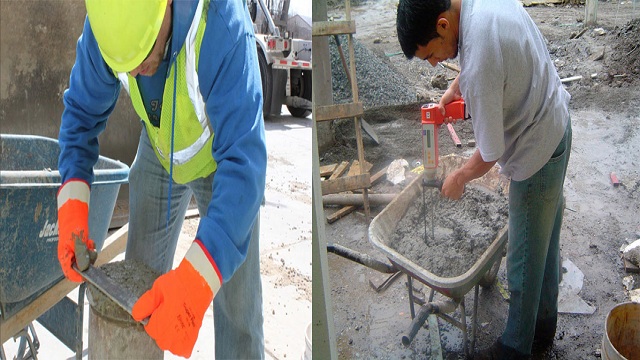Guidelines for quality control of concrete
Definition of quality of concrete
To add more strength and make the building structure long-lasting, the quality concrete is important.
To attain a quality and a stable building structure, retaining the quality and standard of concrete is vital.
Quality control perseverance in concrete construction
- Mechanical properties of the reinforcement to be utilized.
- Dimension of the reinforcement.
- Positioning of the reinforcement in construction prior to pouring of concrete.
- Positioning of pre-stressing ducts.
- Properties of the concrete mix designed to be applied in the structure.
- Control of the coarse aggregates and fine aggregates getting into the concrete.
- Mixing of the concrete.
- Transmission of the concrete to the construction site.
- Slump of the concrete.
- Pouring of the concrete.
- Control of adding water.
- Vibration/Compaction of the concrete.
- Arrangement of areas where various concrete pours are provided.
- Control of compression test samples.
- Control of formwork expulsion.
Also read : HOW CONCRETE BECOMES STRONGER WITH ADDITION OF REBAR
Starting point of quality control
It starts in the production of material that is applied in concrete (sampling and testing):-
- Portland Cement
- Pozzolana
- Coarse and fine aggregate
Consistency of concrete production will not be in excess of than the consistency of materials applied in the concrete.
How does quality control proceed?
- Handling & stockpiling
- Batching & mixing
- Sampling & testing fresh concrete
- Transporting and positioning the freshly mixed concrete.
- Slump
- Air Content
- Unit Weight
- Temperature
Several tests for checking concrete quality
Tests on fresh concrete
- The slump test
- The compacting factor test
Tests on hardened concrete
- Compression test
- Tensile strength test (split cylinder test)
- Flexural strength test
Tests on fresh concrete
The slump test
The mound for the slump test contains the shape of frustum of a cone, 300 mm high. The diameter of the base is 200 mm and at the top is 100 mm.
When the slump is :-
- 25-50 = Low workability
- 50-100 = Medium workability
- 100-150 = High workability
The compacting factor test
- Compacting factor is under 0.75 = low workability concrete.
- Compacting factor is under 0.92 = high workability concrete.
Tests on hardened concrete
Compression test
To find out the characteristic strength of the concrete. The size of the concrete cylinder is 150mm dia 300mm long.
Tensile strength test (split cylinder test)
When the cylinder split the tensile strength of concrete is obtained.
Flexural strength test
Test is conducted to find out the tensile strength of the concrete in flexural and the test is substituted by the indirect tensile strength test it is still indicated sometime on pavement & other equivalent projects where the strength of concrete in flexure, or bending, is of great concern.

